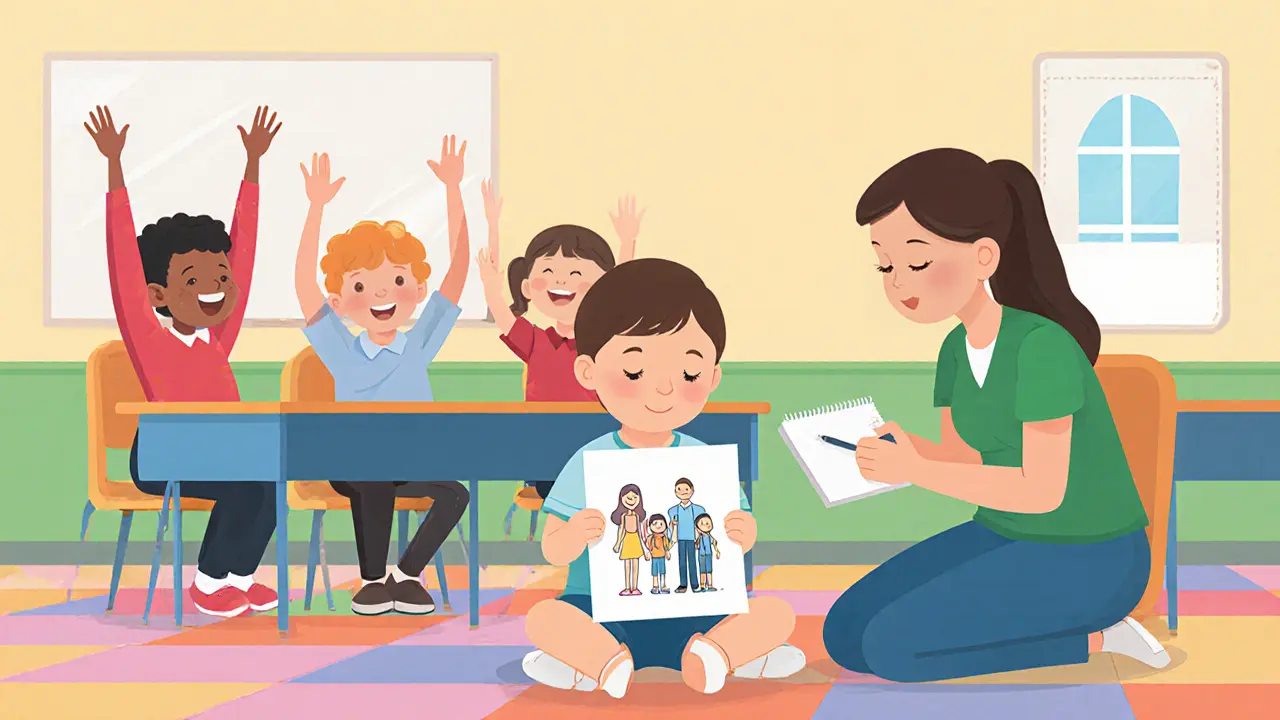Dětská úzkost: Co to je, jak se projevuje a co skutečně pomáhá
When a child won’t go to school, throws tantrums before bedtime, or suddenly refuses to talk, it’s not just being difficult — it’s often dětská úzkost, psychologický stav, kdy dítě cítí nebezpečí tam, kde dospělí nevidí žádné hrozby. Also known as úzkost u dětí, it isn’t about being shy or sensitive — it’s a nervous system stuck in alarm mode, often triggered by unspoken family tensions, changes at home, or feeling unheard. Many parents think their child is just ‘overreacting,’ but the truth is, dětská úzkost is the child’s way of screaming silently when they don’t have the words to say: ‘I’m not safe.’
This isn’t something that disappears with time or discipline. It’s deeply connected to rodinná terapie, přístup, který neřeší dítě jako problém, ale vztahy, ve kterých se úzkost rodí a udržuje. A child’s anxiety often mirrors the emotional climate at home — a parent’s constant worry, silent arguments, or even well-intentioned pressure to be ‘good’ or ‘strong’ can become the invisible weight the child carries. That’s why terapie zaměřená na rodiče, metoda, kde se pracuje s rodiči jako hlavními terapeuty, ne s dítětem works so well. When parents learn to regulate their own reactions, create safety through calm predictability, and stop trying to ‘fix’ the anxiety, the child’s nervous system slowly starts to relax.
It’s not about teaching the child to ‘be brave.’ It’s about changing the environment so bravery doesn’t have to be forced. You’ll find posts here that explain how behavioral strategies for ADHD can reduce anxiety by bringing structure to chaos, how parent training helps break cycles of fear and control, and why online therapy for children can be just as effective as in-person sessions — if done right. You’ll also see how emotional safety in therapy isn’t about talking more, but about being heard without judgment. These aren’t theoretical ideas. They’re tools used daily by Czech therapists who see children who shut down, cry before school, or hide under tables because their world feels too loud, too unpredictable, too unsafe.
What you’ll find below isn’t a list of quick fixes. It’s a collection of real, evidence-based approaches that actually work — from how to respond when your child says ‘I can’t,’ to why silence in therapy can be more powerful than advice, and how changing just one parent’s reaction can shift the whole family’s emotional rhythm. This is about understanding the hidden language of a child’s anxiety — and learning how to answer it with calm, not control.
Úzkostné stavy u dětí a dospívajících se projevují jinak než u dospělých - skrze tělo, únik nebo změny chování. Psychoterapie, hra, rodinná podpora a včasná intervence jsou klíčem k zotavení.
Školní fobie není záškoláctví - je to skutečná úzkostná porucha, která způsobuje fyzické příznaky. Jak ji rozpoznat, co dělat a proč psychoterapie je jediná cesta k vyléčení.
Selektivní mutismus je úzkostná porucha, při níž dítě mluví doma, ale neve škole. Je to nevědomá němota, ne výchovný problém. Terapie pomáhá - pokud začnete včas.


